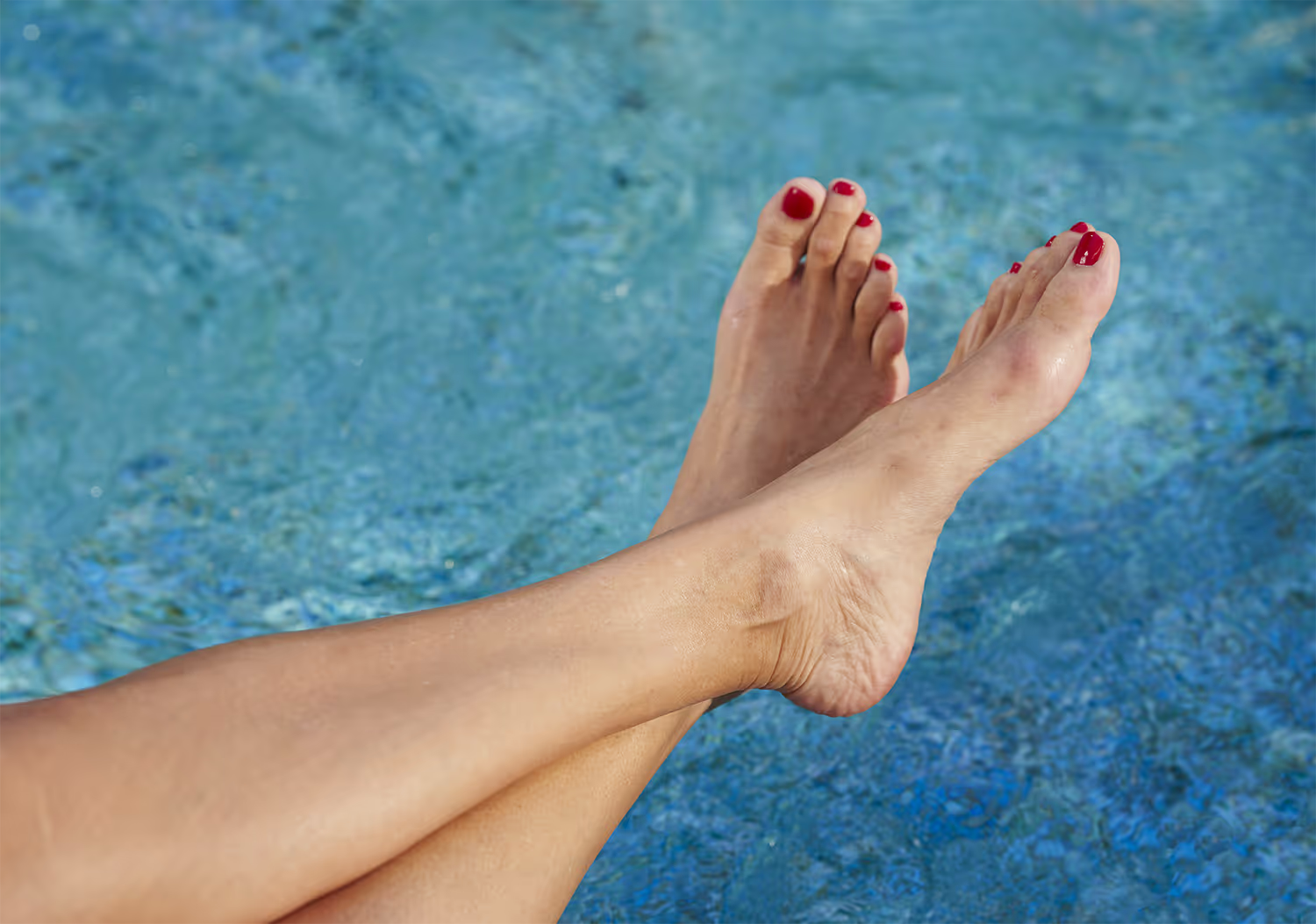This real patient was compensated for the time they took to share their personal experience with the Arthrex Minimally Invasive Bunionectomy procedure.
Whether working or playing, Jesse B relies on his body functioning properly so he can enjoy the active lifestyle and profession he loves. Jesse, 50, loves to be physically active and enjoys numerous outdoor activities, including paddle boarding, hitting the gym, hiking, tennis, playing basketball and other sports with his nephew, and participating in boot camp-style fitness classes. When he moved to a new city, joining a new boot camp class was one of the first things he did. In addition, Jesse’s job in cardiovascular medicine requires him to be on the road a significant amount of time visiting health care providers. “The car is my office. I’m getting in and out of the car, and going in and out of physicians’ offices, all day long,” Jesse says.
After Years of Activity, a Bunion Interferes
Jesse enjoyed his boot camp class and numerous other activities for about a year and a half before he noticed that a bunion on his left big toe was starting to cause pain and limit his activity. He had never had a bunion before but noticed it very quickly after it formed.
“When you’re physically fit and active, you care about the way your body looks and feels, and you’re paying attention to it. Then you look down and it’s like, ‘What’s wrong with my foot?’” he says.
Jesse often dealt with the pain during workouts due to his bunion. Eventually, the bunion became more severe, which made moving and staying active—including his boot camp, other outdoor activities, and even getting in and out of the car and walking around during work—difficult.
Though the pain it caused was his biggest concern, Jesse was also unhappy with how the bunion on his big toe made his foot look. “It’s a little embarrassing when you take your shoes off at the beach or wear flip-flops,” he says.
Jesse reached out to a local foot and ankle surgeon he knew and began having custom orthotics made for his shoes. This conservative bunion treatment helped for a short period, but it didn’t provide the true relief Jesse needed. At that time, he wasn’t interested in surgery because his doctor explained the “tough, long” recovery process for traditional open bunion surgery, he says.
Traditional bunion surgeries require a large incision on the top of the foot, typically between 2 and 6 inches long, so that the area being operated on is “open” to the surgeon. This large incision disrupts the soft tissues around your toe and can cause swelling and stiffness.1,2
Not much later, though, Jesse’s doctor took x-rays and recommended that Jesse consult with a surgeon trained in minimally invasive surgery (MIS) who performs the Arthrex Minimally Invasive Bunionectomy.
Find a Doctor Near You
Enter your city, state, or ZIP (US only) to find a doctor near you.
Unlike traditional surgeries, the Arthrex Bunionectomy only requires a few small incisions (typically about ⅛-in to ½-in long each) on the side of the foot that act as entry portals for the specialized, minimally invasive instruments surgeons use to perform the procedure.
Your surgeon then realigns the bony structure of your big toe, customizing the 3D correction to your specific bunion without fusing a joint.
From his background in the health care industry, Jesse was already aware that minimally invasive procedures have benefits for patients, including less pain and a faster recovery.3,4
Importantly for Jesse, choosing the Arthrex Minimally Invasive Bunionectomy meant getting back to the activities he loves faster.
“I wanted relief. I wanted to get back to living my life,” Jesse says. After his initial consultation with his surgeon, Jesse did additional research on the procedure, and felt comfortable moving forward with surgery.
When he woke up, Jesse says, he wasn’t in pain—and was looking forward to beginning the healing process.
“I had a sense of relief when I woke up,” he says. “I realized I was on the road to recovery and to regaining my active lifestyle. The best thing I can do coming out of surgery is… just to heal, eat right, and listen to my body so I can put this all behind me and get back to my life.”
Jesse was surprised to learn that he went home with just a surgical shoe, and without the aid of a crutch or cane. His surgeon advised him to mainly walk on the heel of his foot in order to bear weight safely.
Six weeks after his surgery, Jesse was able to switch into sneakers, and at 3 months, Jesse’s pain has subsided and the surgical incisions have healed, leaving just a few small scars.
Just a few months after the procedure, while he isn’t entirely back to his previous fitness levels, he’s self-monitoring and plans to get back to full activity soon.
Once hesitant to undergo bunion surgery, Jesse is now enthusiastic about the Arthrex Minimally Invasive Bunionectomy and encourages others who are suffering to learn more about the procedure.
“That was a big deal for me, to go ahead and do… this minimally invasive procedure,” he says. “I would tell anybody that if they have a bunion and they’re in pain to do it.”
References
- Kheir E, Borse V, Sharpe J, Lavalette D, Farndon M. Medial displacement calcaneal osteotomy using minimally invasive technique. Foot Ankle Int. 2015;36(3):248-252. doi:10.1177/1071100714557154
- Frigg A, Zaugg S, Maquieira G, Pellegrino A. Stiffness and range of motion after minimally invasive chevron-Akin and open scarf-Akin procedures. Foot Ankle Int. 2019;40(5):515-525. doi:10.1177/1071100718818
- Lee M, Walsh J, Smith MM, Ling J, Wines A, Lam P. Hallux valgus correction comparing percutaneous chevron/Akin (PECA) and open scarf/Akin osteotomies. Foot Ankle Int. 2017;38(8):838-846. doi:10.1177/1071100717704941
- Lai MC, Rikhraj IS, Woo YL, Yeo W, Ng YCS, Koo K. Clinical and radiological outcomes comparing percutaneous chevron-Akin osteotomies vs open scarf-Akin osteotomies for hallux valgus. Foot Ankle Int. 2018;39(3):311-317. doi:10.1177/1071100717745282










